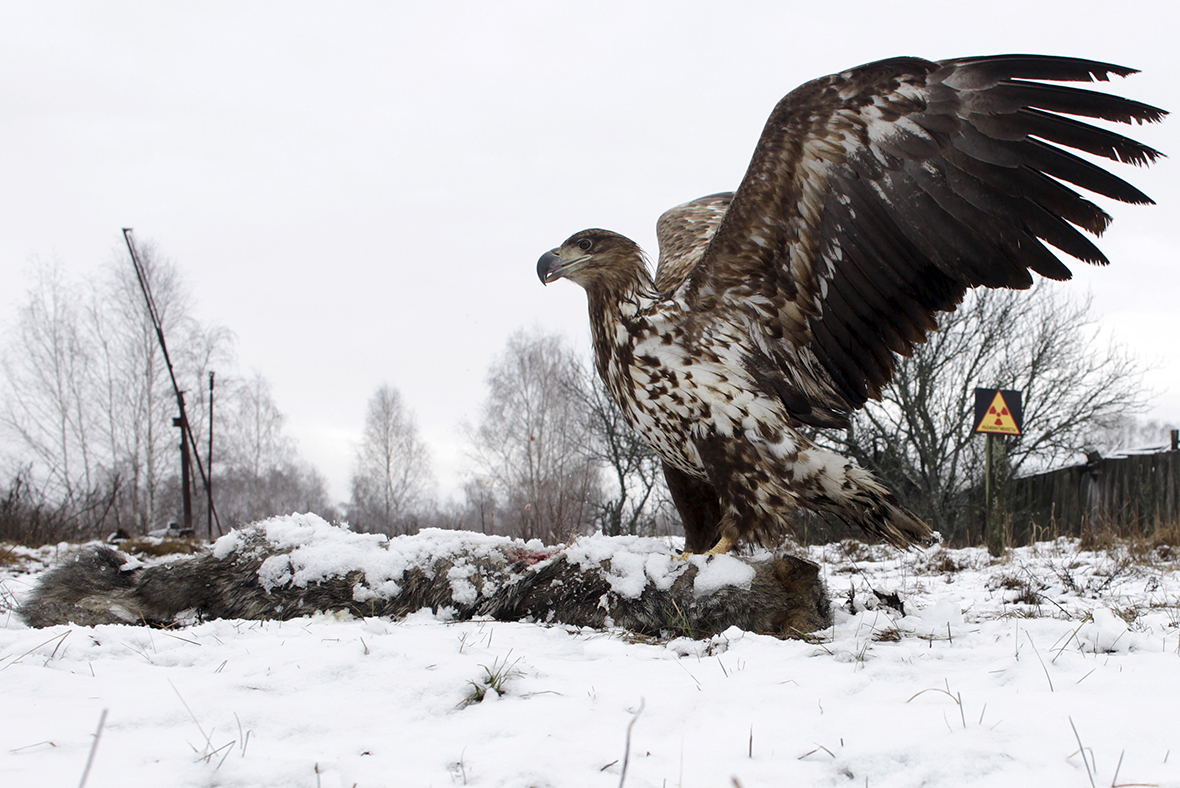Chernobyl: Wolves, eagles and other wildlife thriving in exclusion zone 30 years after disaster
Thirty years after the Chernobyl nuclear disaster, populations of some wildlife – such as wolf, elk and boar – are booming in the vast exclusion zone around the former reactor.
Thirty years after the Chernobyl nuclear disaster, populations of some wildlife – such as wolf, elk and boar – are booming in the vast exclusion zone around the former reactor. Bears and rare wild horses have been spotted roaming the contaminated forests.
On 26 April 1986 a botched test at the nuclear plant in Ukraine, then part of the Soviet Union, sent clouds of radioactive material across large swathes of Europe. More than 100,000 people had to abandon the area permanently, leaving native animals the sole occupants of an area of about 2,600 sq km (nearly 1,000 square miles, or roughly the size of Luxembourg).




Wolf numbers are over seven times higher in parts of the exclusion zone compared with uncontaminated areas elsewhere, according to a study published in the scientific journal Current Biology in October 2015. Wolves have taken to straying outside the zone to steal calves from nearby farms, prompting hunters to set traps or shoot them as a deterrent.




The exclusion zone is uninhabited and closed to unsanctioned visitors. "People can never live there – it's impossible – not even for the next 24,000 years," Ukrainian Ecology Minister Hanna Vronska said of the zone. She said authorities were considering turning the uninhabitable zone into a biosphere to protect and study its native animal populations in what would be the largest nature reserve in Europe.
The long-term impact of the radiation on animal populations is a subject of debate because scientists are struggling to untangle the positive effects of the absence of humans from the negative effects of the radiation.
Nature has been quick to reclaim the area's abandoned infrastructure. Trees sprout from the rusted roofs of apartment blocks in the Ukrainian ghost town of Pripyat, built to house Chernobyl power plant workers. In the Belarussian part of the zone, abandoned villages have become hunting grounds for predators such as wolves and hawks. Birds, including tawny owls and magpies, nest in the roofs and chimneys of crumbling buildings marked with yellow and red radiation warning signs.








It is almost 30 years since the catastrophic accident at the Chernobyl nuclear power plant in Ukraine, then part of the USSR. On 26 April 1986 technicians at reactor number four of the nuclear power plant were conducting a systems test when there was a sudden power surge. The reactor's fuel elements broke, leading to a huge explosion and blowing off the reactor cap. This exposed the graphite covering the reactor to the air, and it ignited. The fire burned for nine days, sending a huge plume of radiation into the environment. It has been estimated that the Chernobyl disaster released into the atmosphere 400 times more radioactive material than the atomic bombing of Hiroshima in 1945.
The disaster killed 31 people almost immediately – almost all of them reactor staff and emergency workers. Between 30 and 50 emergency workers died shortly afterwards from acute radiation. The long-term effects are not yet known but a report suggested the eventual death toll could reach 4,000. Nobody can say for sure when the area will be safe again, but some scientists estimate that it could be 20,000 years before people can live near the plant again.
A 30,000 tonne "safe confinement" arch is being built to prevent more deadly particles spewing from the stricken nuclear reactor's site for the next 100 years. Nevertheless, nothing can be done to decontaminate trees and soil that suffered the worst of the nuclear fallout.
Special government permits, usually valid for a few days, are required for anyone wishing to visit the exclusion zone from the Belarussian side. Roads going into the zone are guarded to prevent any unauthorised person entering. While the rules of access are also strict on the Ukrainian side, small tour groups can visit sites within the zone, including the "ghost town" of Pripyat.
© Copyright IBTimes 2025. All rights reserved.






















